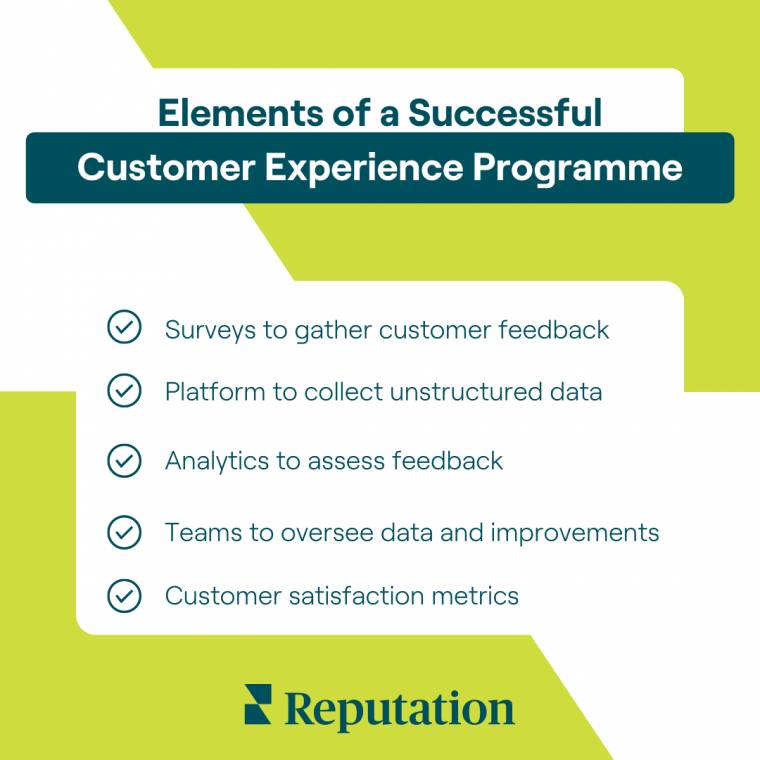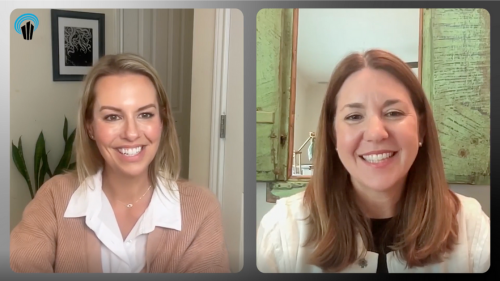10 Tips for Creating a Great Customer Experience Programme
Chris-Sparling

A consistently great customer experience (CX) does not happen by accident. Customer feedback is so important. Businesses need to design a programme geared toward gathering customer feedback and learning from it. This process is getting more challenging especially with the proliferation of unstructured customer data, or feedback that occurs outside the realm of formal customer surveys.
A lot of commentary has been written about the people side of CX programme management – the cultural buy-in required and the commitment from the top. In my experience, even businesses that are completely onboard with CX struggle at a very fundamental level: getting started with a CX programme that yields results.
Setting Yourself up for Success with a CX Programme
In a previous post, we delved into the CX strategy behind setting up an effective programme. That post covers some crucial steps any business needs to undertake in order to set themselves up for success with a CX programme. For example, the most successful and long-lasting programmes are tied to business goals.
The post also provides more context on essential questions such as choosing the right listening strategy and creating a culture of action. This time around, we’ll share some more tactical considerations to consider after you have defined your CX strategy.
What Is a CX Programme?
Before we get into it, let’s review a few concepts to ensure we’re on the same page. A good customer experience programme consists of an organised and systematic approach for listening to customers, learning from them, and making your CX better.
Companies invest in CX programmes for a number of reasons. For one thing, it’s more costly to acquire new customers than to keep them. Customers who are consistently satisfied with their experience are far more likely to remain brand loyal.
And even better, they’ll often become brand ambassadors, referring your business to their family and friends. So, businesses have a strong motivation to find ways to constantly monitor customer feedback to flag potential lapses in CX and identify ways to get better.
Related: What You Need To Know About 3 Common CX Metrics
Remember — each time a customer encounters your brand, they bring with them constantly evolving expectations, wants, and needs. This applies whether they’re interacting with a store associate or placing an order on your website. Their sentiment may change with each encounter. For these reasons alone, CX needs to be more than a single transaction such as a survey conducted once.
CX requires an ongoing programme for engaging with customers throughout the lifecycle of the customer relationship, including follow-up after a purchase, such as when customers require service for a product. Each touchpoint is an opportunity to learn from a customer and improve beyond the sales process.
Only a well-designed CX programme will monitor that sentiment and anticipate how to make customers happier the next time they experience your brand.
What Are the Elements of a CX Programme?

A good CX programme consists of several important elements, including:
- A mechanism for formally asking for and collecting customer feedback, typically a survey.
- A platform to collect unstructured feedback such as social media comments.
- Analytics to assess all the customer feedback and report ways to get better.
- A customer support team, marketing team, and product team to manage the data and make judgments, implement customer-facing improvements, and flag trouble spots.
- Metrics measuring customer satisfaction and how well you’re doing.
An effective programme must master all those elements and more. Setting up a programme the right way can make a big difference in your customer experience.
Related: Reputation Management & CX: The Keys to Growth in 2021
How To Get Started With CX Programme Design
The “little things” like the nuts and bolts of designing a good app survey can make or break a good programme for your business. So, let’s take a closer look at some practical steps:
- Automate your survey invitations to be triggered as close to the experience as possible.
- Test a short message service (SMS) as your survey invitation methodology. This can yield higher response rates and 70% of consumers prefer to message a business for a faster response.
- Reminder emails requesting customer feedback can improve response rates by up to 10%. Send reminder emails three days and/or seven days after the original invitation.
- When creating targets or incentives for your key stakeholders, think carefully and base them on metrics or behaviors that are within their control. NPS or Satisfaction is often influenced by many different aspects of the experience (e.g., pricing, brand messaging). Consequently, they are not always the right metric for all stakeholder groups.
- Design your programme to focus on the action and not the score. Asking verbatim feedback from your customers is essential to understanding what drives their behavior.
- After a bad experience, use close-the-loop technology to track and monitor the follow-up. If a close-the-loop ticket is not closed, escalate the case higher up the chain. Doing so can limit negative word of mouth.
- Think about sample control within your programme. Consider how much your team is asking for customer feedback and how often they’re doing so. Are you asking it across all touchpoints, and, if so, are you limiting the number of survey requests to a reasonable number? The best practice would be 1-2 per month for high-frequency customers.
- Create programme governance internally with each one of your key stakeholder groups. Analyse feedback periodically to understand strengths and weaknesses and generate ideas for improving the overall customer experience. Is the programmer aligned to the business? Are you able to use customer feedback as a data source that helps with tactical and strategic business decisions?
- View your customer feedback data and analysis alongside other business intelligence data (e.g., labor hours, transactions, sales data). Insights will be clearer and more actionable when you link to other data sources
- Align your customer experience strategy in a way that talks to all of your customers and potential customers. Include both interactions with customers and those with people who engage with you but don’t go on to purchase. Consider what you can learn from that feedback and find a way to act on it.
Related: Best Practices for Effective CX Design in 2021
As you consider these steps toward designing a CX programme, consider a single technology platform. This will act as backbone that provides a single source of intelligence by unifying the disparate elements of CX. This is especially important as your CX programme taps into the myriad sources of unstructured data floating across the web especially on social platforms such as Facebook.
A platform that relies on elements of artificial intelligence such as natural language processing is best suited to capturing this wide-ranging feedback in real-time. It can also help find patterns in customers’ comments.
Need More Help?
Looking for more information about living up to customers’ expectations and how our platform can help your business to drive revenue from customer-centric feedback? You can reach out to our CX solutions experts for a consultation. Reputation’s all-in-one platform offers a number of different products and solutions that can help your business to create a top-notch customer experience.
Please do not hesitate to get in touch with me on LinkedIn and ask any questions. I’d be more than happy to guide your business along their customer experience programme journey.










